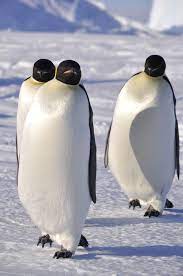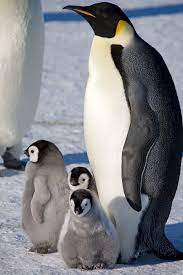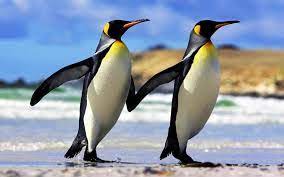We explain everything about emperor penguin adaptations,where they live, what they eat and other characteristics. Also, how long they live and how they reproduce.

Penguins are social animals that inhabit numerous colonies , and whose greatest danger to life is represented by the human hand . In fact, climate change and the melting of the poles is one of the main risks that the species must face, along with marine pollution from chemicals and plastics.
The emperor penguin, whose scientific name is Aptenodytes forsteri, belongs to the Spheniscidae family and is classified as a species of sphenisciform bird, that is, it is part of the flightless seabirds that inhabit only the southern hemisphere.
What are the Emperor Penguin Adaptations.

Arctic animals have many adaptations to help them survive in an often inhospitable climate.
- Some penguins live in Antarctica, where it is very cold and water temperatures never rise above freezing. Others live further north, but all penguins live in the southern hemisphere.
- Penguins are flightless birds, but they are excellent swimmers. They live on ice and in the oceans around Antarctica. They breed on land or on ice surfaces along the coast and on islands.
- Penguins have webbed feet for powerful swimming. Their bodies are aerodynamic to reduce water resistance. Their fin-shaped wings also help them “fly” underwater at speeds of up to 15 mph.
- Penguins have to maintain high body temperatures to stay active. They have thick skin and lots of oil (fat) under their skin to keep them warm in cold weather.
- They also snuggle together with their friends to keep warm. Emperor penguins have developed a social behavior that, in cold weather, group into groups that can comprise several thousand penguins.
- The dark-colored feathers on a penguin’s back surface absorb heat from the sun, so they also help warm them.
- Very tight penguins’ feathers overlap to provide waterproofing and warmth. They coat their feathers with oil from a gland near the tail to increase waterproofing. Waterproofing is critical for penguin survival in water, Antarctic seas can be as cold as -2.2 ° C (28 ° F) and rarely exceed + 2 ° C (35.6 ° F).
- (-2 ° C is the freezing point of seawater, below zero due to salt).
- Penguins don’t have all the extra airspace in their bones that normal birds have. Their heavy, solid bones act like a diver’s weight belt, allowing them to stay underwater.
Penguins are broadly characterized by the following:Emperor Penguin Adaptations
- Like all birds, they are bipedal, but lack flight . Their wings, adapted for swimming, have compressed and solid bones, with rigid joints, and their legs are located further back than usual, to allow them to stand in the dry, and also act as rudders under water. The general shape of their body is hydrodynamic, although they are very variable in size.
- Penguins are excellent swimmers, capable of reaching speeds of up to 60 kmph and holding their breath for up to 18 minutes, in some species. Most of their time is spent submerged, but they emerge to reproduce and spawn.
- The plumage of penguins consists of three different layers , with black and white colors and other features that vary according to the species, but they also have a thick layer of fat under the skin to insulate body heat from the frozen water and air of Antarctica .
- They communicate by squawking , with a level of specificity such that they can recognize each other in the midst of noisy and crowded colonies.
- They are sociable animals, forming large colonies and famous for their monogamy . In various cultures they occupy a place of sympathy, considered in the West as exotic animals .
